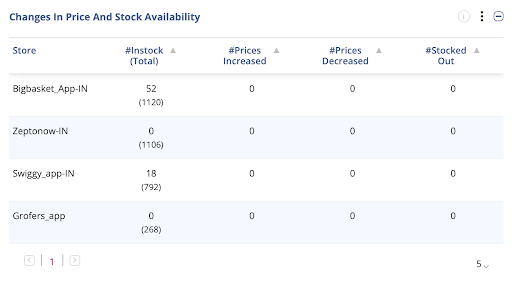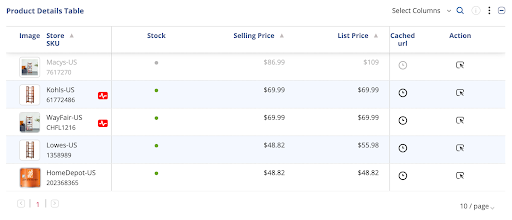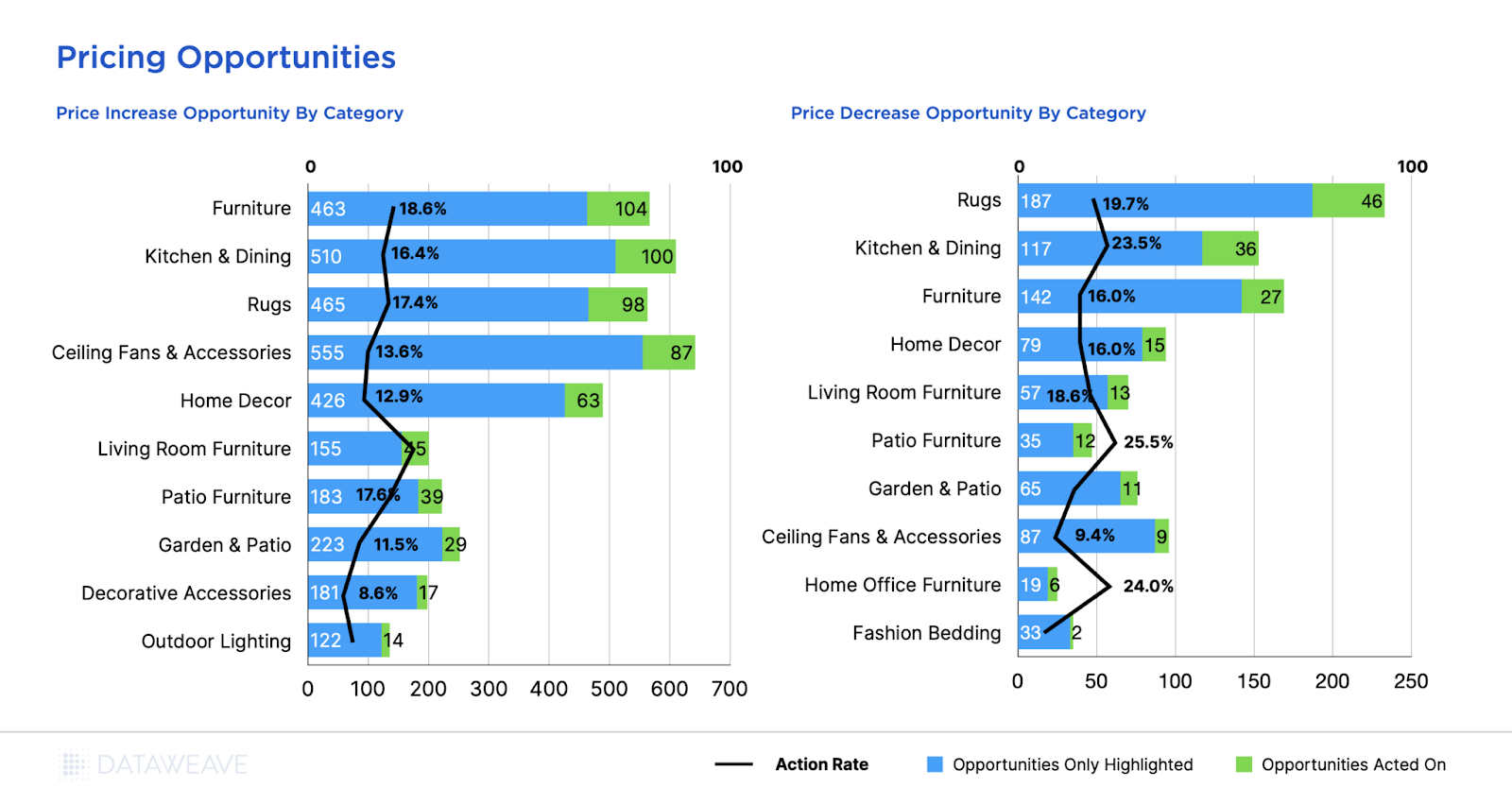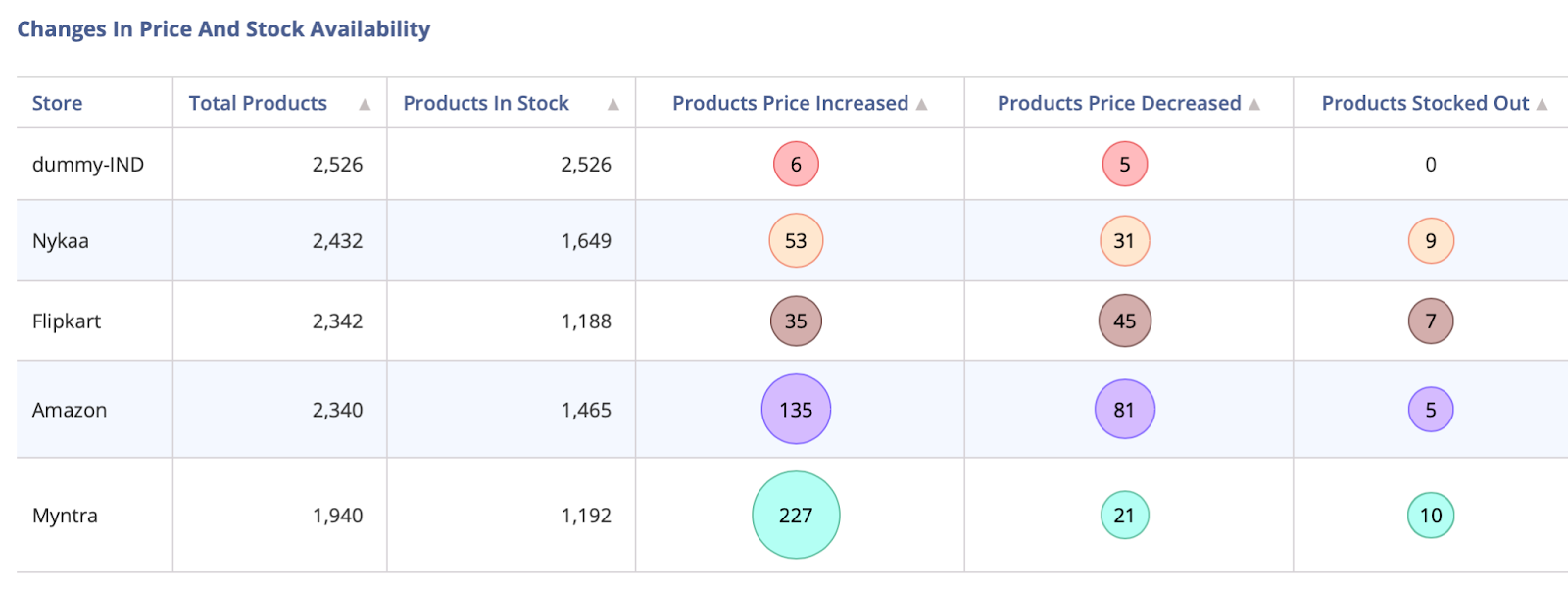In the age of a mature eCommerce and omni-channel retail ecosystem, pricing is the premier competitive battleground. It’s both the biggest offensive weapon to capture market share – and the biggest vulnerability if you stumble. In fact, a recent Statista survey revealed that 70% of US online users prioritize competitive pricing in their digital shopping choices. Yet most retailers still struggle with consistent, profitable pricing often replying on instincts rather than data-led intelligence.
That’s where Pricing Intelligence (PI) comes in. PI is a fast-evolving discipline powering data-driven, continually optimized pricing strategies to help merchants make rapid, surgical adjustments that attract customers and protect margins. Most retailers are aware of Pricing Intelligence tools, but they miss out on getting one that serves their needs and proves its ROI consistently.
Because of course, not all pricing intelligence solutions are created equal. Here’s top features retailers looking to invest in a Pricing Intelligence tool should look out for.
1. Accurate Product Matching
Of course, accurate pricing data is table stakes for any PI solution – The core premise of any pricing intelligence tool is enabling robust product tracking and price monitoring of your own catalog against the competition.
So, a PI tool must take care of matching each of your product across all other sources, so that you can make a straightforward comparison and take actions.
But since the internet is not a one standard entity and even the same or similar products can have different titles, descriptions, specs and images, most retailers end up capturing incomplete or inaccurate data completely undermining their intelligence. A good Pricing Intelligence tool like DataWeave’s should be able to leverage Similarity Matching and AI-based image tracking to bring more products under product matches and present a more complete picture.

2. Width of pricing types and factoring in real net effective prices
Product accuracy must extend far beyond just basic “landed” or “street” pricing and cover more types of specialized pricing situations. A robust pricing intelligence tool should automatically detect and handle nuanced mechanics like:
– Bundled/kit/packaged pricing
– Pricing regulated by manufacturer policies (MSRP, MAP, etc.)
– Complex promotional structures (% off, BOGO, BXGX, etc.)
– Inventory-level or stocking threshold-based pricing
– Zonal/regional taxes, fees and price variations
– Segment-based pricing for members, loyalty tiers, etc.
– Pricing tiers or breaks based on volume/purchase quantities
Properly capturing and classifying these additional pricing nuances by retail vertical is key. Otherwise you’ll have major blind spots and inaccuracies that leave you open to being undercut or overpriced compared to real-world market dynamics.
3. Real-Time, Continuous Monitoring and High Data Update Frequency
Data points like product prices and offers get stale fairly quickly. Ideally, we want to see real time data. Real time is not achievable at scale, or might even be an overkill in many cases.

However, an effective PI tool must present up-to-date data to the extent possible. Based on requirement this can vary from a day to a few hours thus helping the business stay ahead of the price curve.
4. Scalable Coverage and Contextual Enrichment For Full Product Information
For many retailers, one of the biggest pricing intelligence challenges is scaling comprehensive, accurate monitoring across their full product catalog and relevant competitor ecosystem. This is especially true for those operating regionally or with multiple banners/brands.
You need robust data collection capabilities to ingest and process pricing data on everything from big box retailers and national sellers all the way down to small mom-and-pop shops that may only sell locally – but could still impact your pricing perception.
A best-in-class PI solution should have the ability to dynamically monitor millions of products and tens of thousands of competitor sources globally, processing all those inputs in a normalized, unified way. Additionally, your PI solution needs to be flexible to adapt seasonal or special requirements – whether that involves tracking key value items more frequently, or getting updates on pricing changes during festive seasons.

But beyond just raw data collection scale, leading PI solutions also enrich and add context around that pricing data to make it far more actionable through technologies like:
– Machine learning models to extract intelligent insights
– Semantic processing to identify nuanced pricing mechanics
– Competitive product knowledge graphs to map relationships
– Location data appending for geographic/zonal context
This enrichment bridges the gap between simple “list prices” and real-world factors like localized promotions, inventory levels, demand elasticity and other variables that should be driving more nuanced, profitable pricing decisions.
5. Pricing Opportunities
A good PI tool should present data at different levels of granularity: category, sub-category, brand, and individual product. This helps the category/merchandizing team or the pricing analysts to surgically strike problem areas. For instance, when you are tracking 1000s or even 100s of products, it’s next to impossible to go over every product and take pricing decisions.

Furthermore, with large, diverse product catalogs, it’s impossible for category managers to manually monitor pricing on every SKU. Your pricing intelligence tool must automatically analyze and highlight prioritized pricing opportunities where action is needed – enabling efficient pricing decisions at a glance.
6. Historical Pricing
“Prediction is very difficult, especially if it’s about the future.” But they also say, history can be a useful predictor of the future. Nowhere is it truer than in competitive price intelligence.

An analysis of historical data almost always shows a trend that can be capitalized on for competitive pricing. A good PI tool stores and presents historical pricing data in a useful manner.
7. “It’s not [just] about the money”
Retail is a highly competitive and commoditized sector. So, price is an important factor for a consumer when making a decision to buy a product. Having said that, as a retailer, you don’t always want to compete on pricing.
You may want to compete through better packaging, or giving the user more choice (variants/colours/sizes), or better SLAs. This is where a Price Intelligence tool needs to go beyond just pricing. It needs to capture and present all other relevant data points associated with a product.
8. Uncluttered User Experience
Any tool built for a user needs to be usable, intuitive, and uncluttered. More so for busy managers who need to take several decisions quickly day on day. A Price Intelligence tool is in essence a Data Product. A data product is built on top of a lot of data; however, a good data product is one “where data recedes to the background”.

A data product is not one that delivers a lot of data, but one that delivers actionable data and insights based on data. Data presentation is also another important aspect. A good PI tool delivers the most important data points in formats and templates that a customer can easily consume.
DataWeave provides Competitive Intelligence for retailers, brands, and manufacturers. It is built on top of huge amounts of products data to provide features such as: pricing opportunities (and changes), assortment intelligence, gaps in catalogs, reporting and analytics, and tracking promotions, and product launches.
DataWeave is powered by distributed data crawling and processing engines that enables serving millions of data points around products data refreshed on a daily basis. This data is presented through dashboards, notifications, and reports. PriceWeave brings the ability to use BigData in compelling ways to retailers.
PriceWeave lets you track any number of products across any categories against your competitors. Still not convinced? Try us out. Just send us a request for a demo.
Thank you for Subscribing - Team DataWeave
Book a Demo
Login
For accounts configured with Google ID, use Google login on top. For accounts using SSO Services, use the button marked "Single Sign-on".
